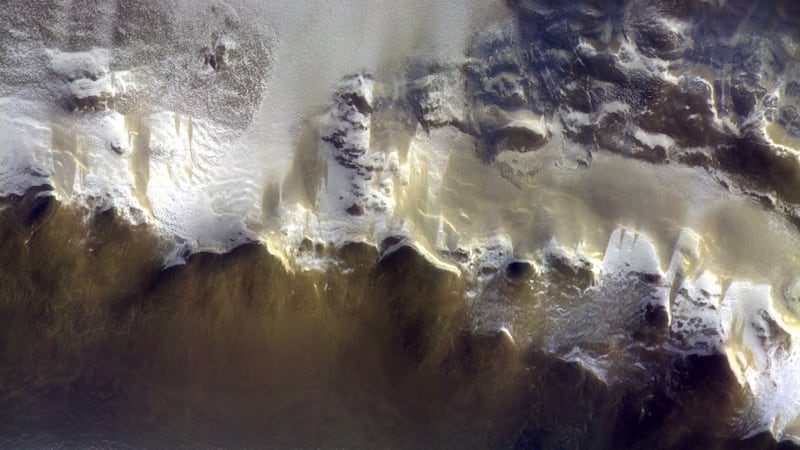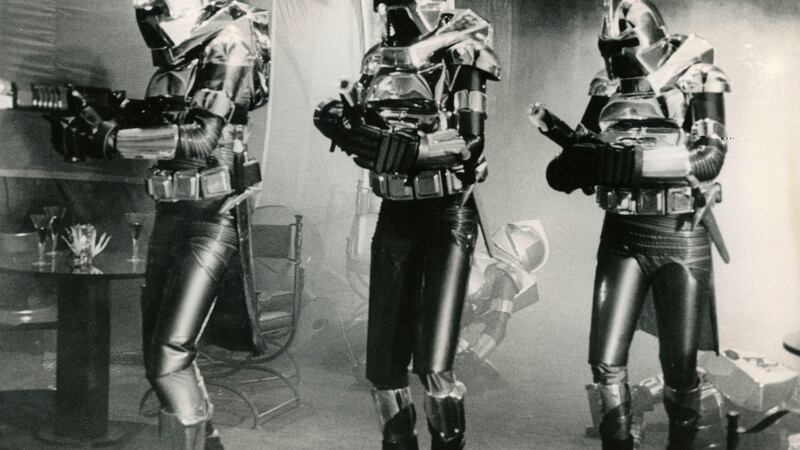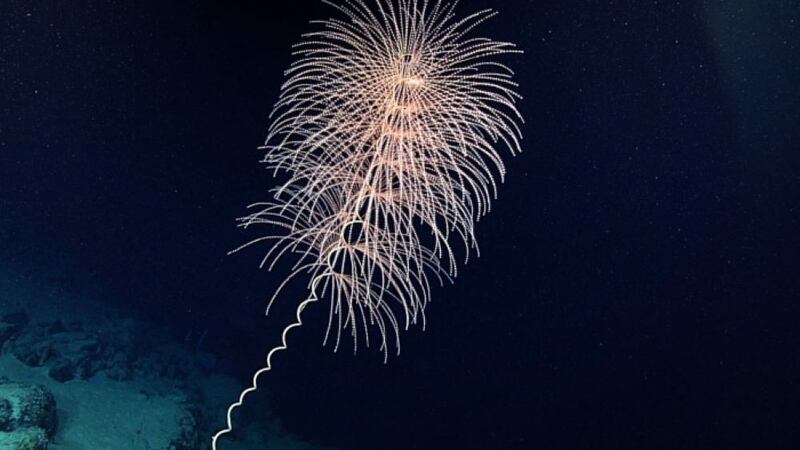A space probe supported by the UK Space Agency orbiting Mars has sent back its first images of a Martian crater covered in ice.
The images were taken by the ExoMars Trace Gas Orbiter (TGO) 400km above the surface of Korolev, an ice-filled crater located in the northern hemisphere of the planet.
The TGO was launched in 2016 as part of the European Space Agency and Russian space agency Roscosmos’s joint ExoMars mission.
The second leg of the mission is the ExoMars Rover – a six-wheeled vehicle being built in Hertfordshire ahead of its launch in 2020 – which will analyse ground samples and search for molecular signs of life.
The TGO reached its final orbit around Mars in February after a year of aerobraking – a process that involves controlled use of atmospheric friction to change the path of a spacecraft from an elliptical to a more circular orbit.
This fantastic image of ice on Mars from @ESA_ExoMars has just been released. We’re supporting the mission, including funding for @OpenUniversity to help operate the camera https://t.co/RRUSrAeLNM pic.twitter.com/daX0fOJHh6
— UK Space Agency (@spacegovuk) April 26, 2018
Its camera system – called CaSSIS (Colour and Stereo Surface Imaging System) – was activated on March 20.
The Korolev image is a composite of three photos in different colours taken on April 15.
Dr Manish Patel, from the Open University, a member of the CaSSIS science team working on the instrument operations, said: “The images that CaSSIS is beginning to return are simply fantastic.
“To see the quality of the colour in these first images is a testament to the hard work of the CaSSIS team in getting the instrument to Mars on TGO.”
The TGO is designed to analyse rare gases in the planet’s atmosphere, especially methane, which can be a by-product of life. The probe will analyse whether the gas is from a geological or biological source, and provide data for future missions.
The UK Space Agency has contributed 287 million euros (£250 million) to the overall ExoMars mission.








